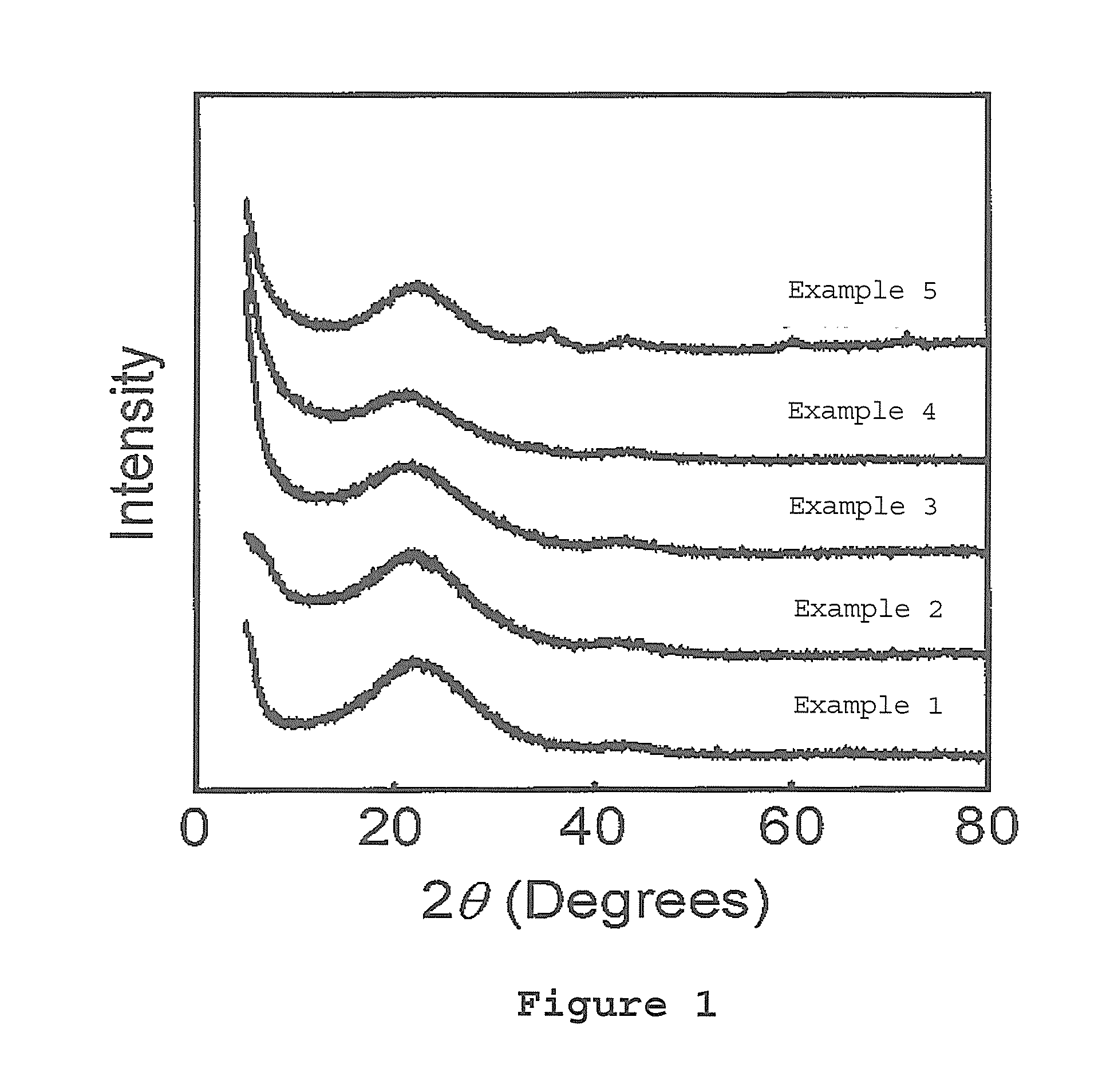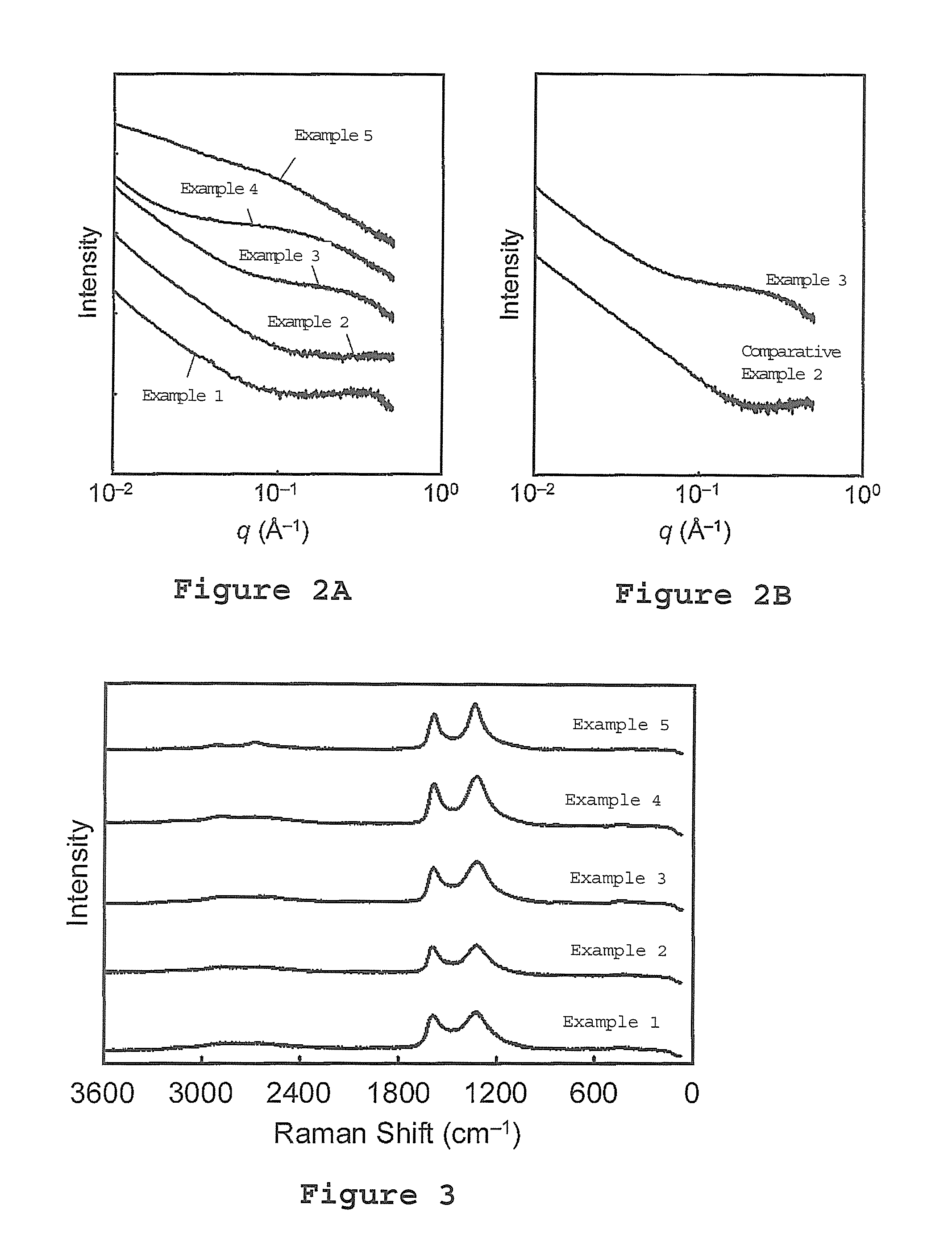Anode active material for secondary battery and method for producing the same, anode and lithium ion battery using the same
an active material and secondary battery technology, applied in the direction of non-metal conductors, cell components, conductors, etc., can solve the problems of lithium metal being sensitive to heat, prone to explosion, and affecting the discharge and discharge efficiency of secondary batteries
- Summary
- Abstract
- Description
- Claims
- Application Information
AI Technical Summary
Benefits of technology
Problems solved by technology
Method used
Image
Examples
synthesis example 1
Synthesis of Octaphenyl Silsesquioxane (10)
[0102]In a 1,000 mL four-necked flask, 360 mL of toluene (Wako Pure Chemical Industries, Ltd.), 42.2 g (37% TBAH in MeOH) of tetrabutylammonium hydroxide (Tokyo Chemical Industry Co., Ltd.) and 16.2 g of pure water were put, and the resulting mixture was stirred and cooled in an ice bath. Into a 500 mL dropping funnel, 360 mL of diethyl ether (Wako Pure Chemical Industries, Ltd.) and 118.9 g of phenyltrimethoxysilane (Tokyo Chemical Industry Co., Ltd.) were charged, and the resulting mixture was added dropwise in 5 minutes. After dropwise addition, the ice bath was removed, and the resulting mixture was stirred at room temperature for 70 hours. After 70 hours, filtration was conducted using a filter press.
[0103]Powder obtained was transferred to a beaker, washed with toluene, and again, pressure filtration was conducted. After filtration, the resulting material was dried under reduced pressure at 120° C. for 6 hours by a vacuum drier to giv...
synthesis example 2
Synthesis of (PhSiO3 / 2)n
[0104]In a 500 mL four-necked flask, 99.1 g of phenyltrimethoxysilane (Tokyo Chemical Industry Co., Ltd.) and 16 g of methanol (Wako Pure Chemical Industries, Ltd.) were put. While the resulting mixture was stirred at room temperature, 36 g of 1N HCl was slowly added dropwise in 30 minutes from a dropping funnel. After completion of dropwise addition, the resulting mixture was heated and stirred at 60° C. for 2 hours. After 2 hours, the resulting mixture was cooled and 200 g of toluene (Wako Pure Chemical Industries, Ltd.) was added dropwise thereto.
[0105]Then, a reaction mixture was transferred to a 500 mL separating funnel. The mixture was washed with saturated brine, and then washed with saturated sodium hydrogencarbonate water, further washed with saturated brine twice, and finally washed with pure water twice. After washing with water, the resulting mixture was dehydrated over magnesium sulfate (Wako Pure Chemical Industries, Ltd.). The liquid was trans...
example 1
Preparation of Silicon Oxide-Based Composite Material
[0106]On a boat made from alumina of a SSA-S grade, 15.0 parts by weight of octaphenyl silsesquioxane (10) were placed, and then the boat was set in a vacuum purge-type tube furnace KTF43N1-VPS (made by Koyo Thermo System Co., Ltd.), and as heat treatment conditions, temperature was increased at a rate of 4° C. / min and pyrolysis was made at 1,000° C. for 1 hour while Ar was supplied at a flow rate of 200 mL / min under an argon atmosphere (high purity argon 99.999%) to give a silicon oxide-based composite material.
[0107]Subsequently, the resulting silicon oxide-based composite material was ground for about 3 hours in atmospheric air using a ball mill made from zirconia, and classification was made using a 32 micrometer sieve made from stainless steel to give particulate silicon oxide-based composite material (15) having a maximum powder diameter of 32 micrometers.
[0108]An X-ray diffraction pattern, a small-angle X-ray scattering pat...
PUM
| Property | Measurement | Unit |
|---|---|---|
| temperature | aaaaa | aaaaa |
| diameter | aaaaa | aaaaa |
| 2θ | aaaaa | aaaaa |
Abstract
Description
Claims
Application Information
 Login to View More
Login to View More - R&D
- Intellectual Property
- Life Sciences
- Materials
- Tech Scout
- Unparalleled Data Quality
- Higher Quality Content
- 60% Fewer Hallucinations
Browse by: Latest US Patents, China's latest patents, Technical Efficacy Thesaurus, Application Domain, Technology Topic, Popular Technical Reports.
© 2025 PatSnap. All rights reserved.Legal|Privacy policy|Modern Slavery Act Transparency Statement|Sitemap|About US| Contact US: help@patsnap.com



